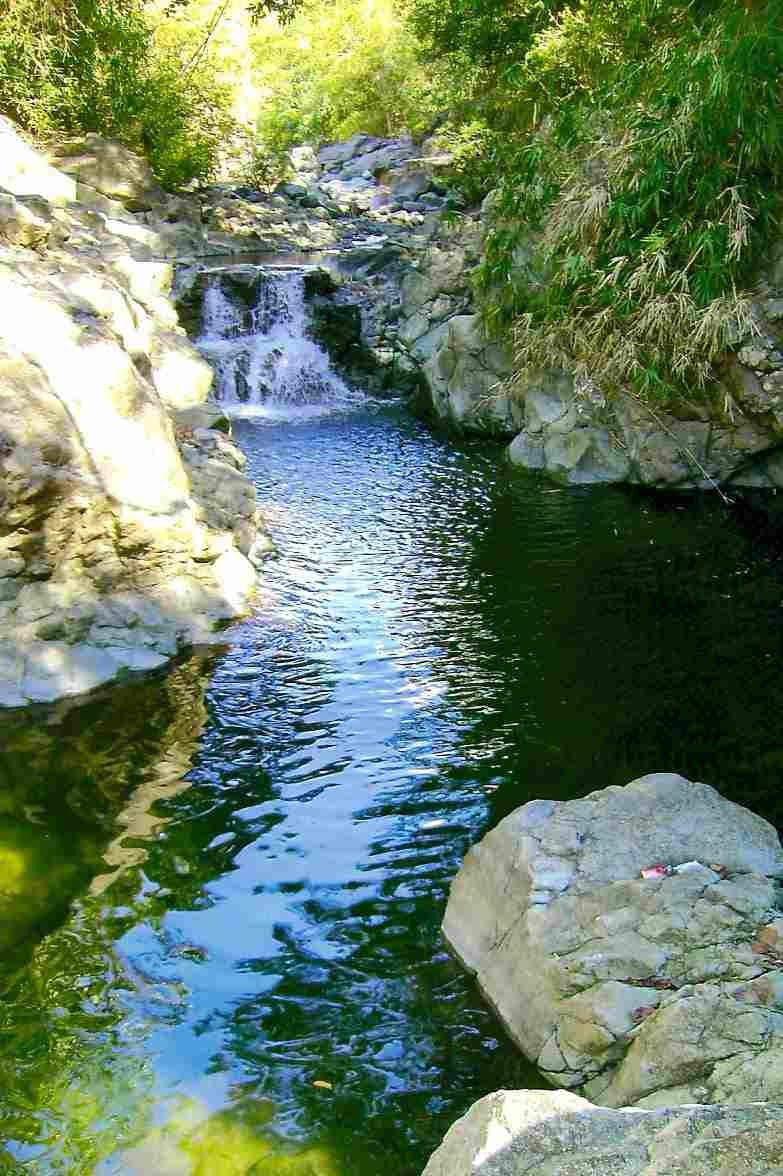Lagangilang, Abra
According to legend, Lagangilang derived its name from combining the words ‘ilang-ilang” and “lagam”. Ilang-ilang, predominant in the municipality, is a tree whose flowers emit a distinctively sweet scent especially at night. Lagam, meaning bravery, is the name of a famous Tinguian leader who once ruled and defended the original Tinguian village of Lagangilang along the eastern bank of the Abra River from adversaries.
In 1908, Lagangilang became a municipality district from a small settlement of Tinguians called Itnegs. In 1910, the first missionary station was established and in 1918, Lagangilang became a full-fledge municipality. During the latter part of the Spanish regime, traders from Ilocos Sur, using the Abra River as route, sailed upstream to barter goods for land. The Ilocanos first settlement was barangay Aguet, half kilometer west of the Poblacion. Ever searching for a better place to live in, the Ilocano immigrants spread eastward along the bay river founding the communities of Presentar, Nagtupacan, Dalaguisen, Taping, Bio and San Isidro.
An important institution that helped shape the municipality is the 82 year old school established in 1908 during the American regime by an American named Amos E. Allen. The Americans took turn in its administration until 1917, when the first Filipino administrator, Jose Reyna, took over. The school became an agricultural college on June 6,1966, by virtue of Republic Act No. 4647. During World War II, the school served as the seat of the military government of Abra.
As it was in its olden days, the municipality is one of the major learning centers of the province catering not only to the educational needs of Abra but also to neighboring provinces such as Ilocos Sur, Ilocos Norte, La Union, and Mountain Province.
At present , Lagangilang is subdivided into 17 Barangays: Aguet, Bacooc, Balais, Cayapa, Dalaguisan, Laguiben, Lagben, Laang, Nagtupacan, Nagtipulan, Pawa, Presentar, Tagodtod, Taping, Poblacion, Paganao, and San Isidro.
In 1908, Lagangilang became a municipality district from a small settlement of Tinguians called Itnegs. In 1910, the first missionary station was established and in 1918, Lagangilang became a full-fledge municipality. During the latter part of the Spanish regime, traders from Ilocos Sur, using the Abra River as route, sailed upstream to barter goods for land. The Ilocanos first settlement was barangay Aguet, half kilometer west of the Poblacion. Ever searching for a better place to live in, the Ilocano immigrants spread eastward along the bay river founding the communities of Presentar, Nagtupacan, Dalaguisen, Taping, Bio and San Isidro.
An important institution that helped shape the municipality is the 82 year old school established in 1908 during the American regime by an American named Amos E. Allen. The Americans took turn in its administration until 1917, when the first Filipino administrator, Jose Reyna, took over. The school became an agricultural college on June 6,1966, by virtue of Republic Act No. 4647. During World War II, the school served as the seat of the military government of Abra.
As it was in its olden days, the municipality is one of the major learning centers of the province catering not only to the educational needs of Abra but also to neighboring provinces such as Ilocos Sur, Ilocos Norte, La Union, and Mountain Province.
At present , Lagangilang is subdivided into 17 Barangays: Aguet, Bacooc, Balais, Cayapa, Dalaguisan, Laguiben, Lagben, Laang, Nagtupacan, Nagtipulan, Pawa, Presentar, Tagodtod, Taping, Poblacion, Paganao, and San Isidro.
